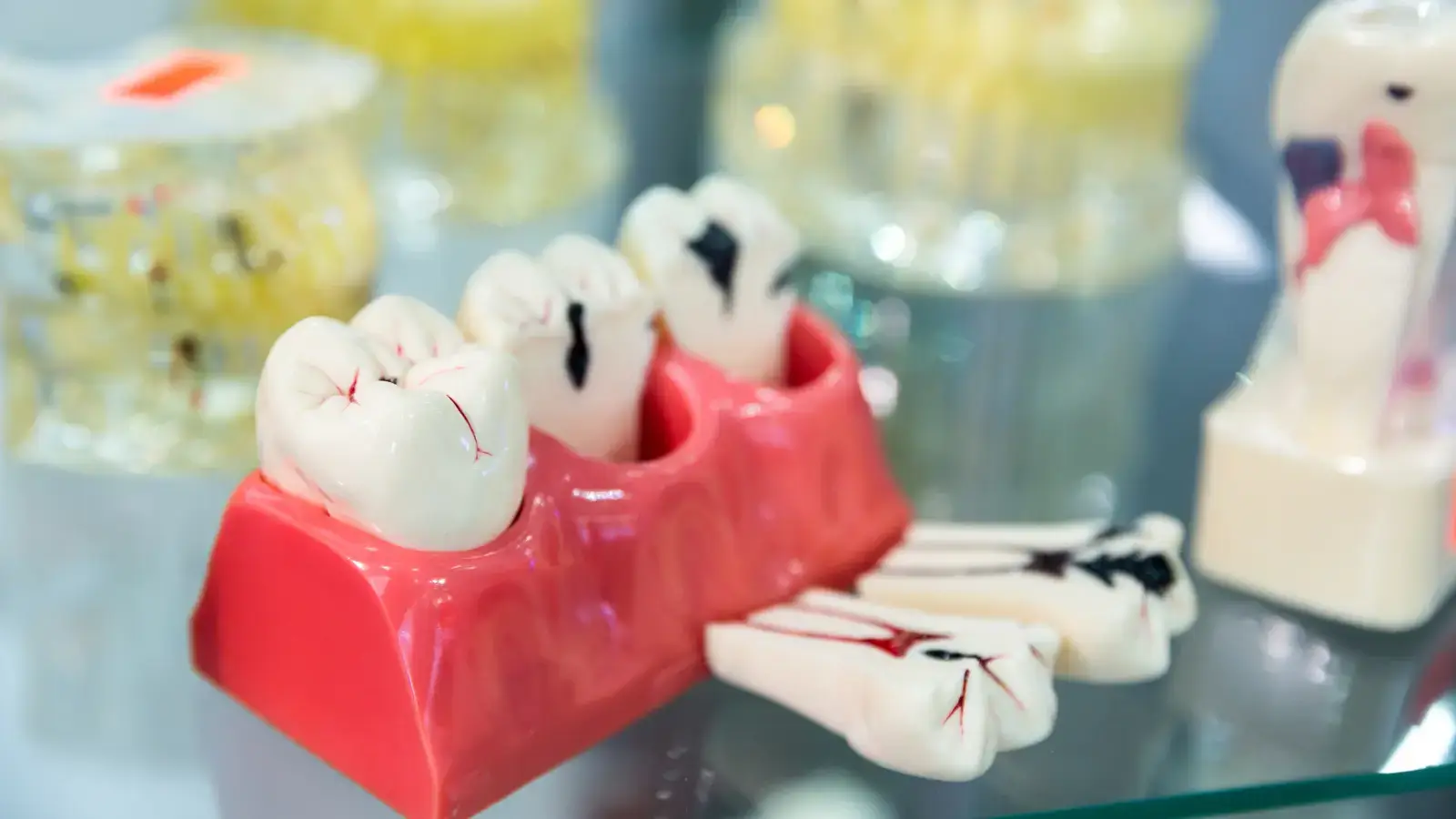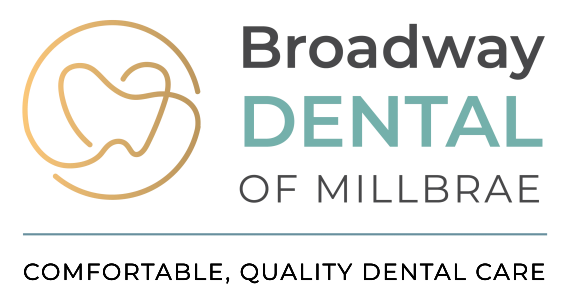Book Now
Step-by-Step: How Tooth Decay Progresses and How to Prevent It
Millbrae, CA

Tooth decay, also known as dental caries, is a common problem affecting people of all ages. Understanding the stages of tooth decay and how to prevent it can help you maintain a healthy, radiant smile. In this comprehensive guide, we’ll explore the progression of tooth decay, its effects on oral and overall health, and provide valuable tips for prevention. Welcome to Broadway Dental of Millbrae’s ultimate guide on tooth decay!
What is Tooth Decay?
Tooth decay occurs when the enamel, the outer layer of the tooth, breaks down due to the acid produced by bacteria in the mouth. This acid forms when sugars and starches from food interact with the bacteria on the teeth. Over time, this can lead to cavities, pain, and even tooth loss if not properly managed. According to the World Health Organization (WHO), dental caries is one of the most prevalent chronic diseases globally.
The Stages of Tooth Decay
Understanding the stages of tooth decay is crucial for early detection and prevention. Here’s a detailed look at each stage:
Stage 1: Initial Demineralization
What Happens: The first stage of tooth decay begins when acids start to demineralize the enamel. You might notice white spots on your teeth, which indicate mineral loss. According to a study published in the Journal of Dentistry, early demineralization is often reversible.
Effect on Health: At this stage, there is no pain, and the damage can still be reversed with proper care.
Prevention Tips:
- Fluoride Use: Regular use of fluoride toothpaste can help remineralize the enamel.
- Dietary Changes: Reduce sugar intake to prevent acid production.
- Hydration: Drinking water, especially fluoridated water, can help wash away food particles and bacteria.
Stage 2: Enamel Decay
What Happens: If the initial demineralization isn’t treated, the enamel continues to break down, leading to the formation of cavities.
Effect on Health: You may start to experience sensitivity to hot, cold, or sweet foods and drinks.
Prevention Tips:
- Regular Brushing and Flossing: Maintain a good oral hygiene routine to remove plaque.
- Dental Check-ups: Regular visits to your dentist in Millbrae can help catch early signs of decay.
- Healthy Diet: Incorporate foods rich in calcium and phosphorus, such as dairy products and leafy greens, to strengthen your enamel.
Stage 3: Dentin Decay
What Happens: Once the enamel is compromised, decay can quickly spread to the dentin, the layer beneath the enamel. Dentin is softer and less resistant to acid.
Effect on Health: Increased sensitivity and potential pain as the decay approaches the nerve.
Prevention Tips:
- Professional Treatments: Your dentist may recommend fillings or other treatments to stop the decay.
- Good Oral Hygiene: Continue rigorous oral care to prevent further progression.
- Avoid Acidic Foods and Drinks: Limit consumption of soda, citrus fruits, and other acidic foods that can erode enamel.
Stage 4: Pulp Damage
What Happens: The decay reaches the pulp, which contains nerves and blood vessels. This can lead to severe pain and infection.
Effect on Health: Pain becomes more intense, and there is a risk of abscess formation.
Prevention Tips:
- Immediate Dental Care: Seek professional dental care immediately to address the damage.
- Root Canal Treatment: In some cases, a root canal may be necessary to save the tooth.
- Pain Management: Over-the-counter pain relievers can help manage discomfort until you see your dentist.
Stage 5: Abscess Formation
What Happens: The infection from the pulp spreads to the surrounding tissues, causing an abscess.
Effect on Health: Severe pain, swelling, and fever are common. This stage can be life-threatening if not treated promptly.
Prevention Tips:
- Emergency Treatment: Immediate dental intervention is required.
- Antibiotics: Your dentist may prescribe antibiotics to control the infection.
- Drainage Procedures: In severe cases, surgical drainage of the abscess may be necessary.
Stage 6: Tooth Loss
What Happens: If the infection is not treated, it can lead to the loss of the tooth and potentially damage adjacent teeth and bone.
Effect on Health: Tooth loss can affect your ability to eat, speak, and smile confidently.
Prevention Tips:
- Preventive Care: Regular dental visits and good oral hygiene can prevent the progression to this stage.
- Replacement Options: Discuss options like implants, bridges, or dentures with your dentist in Millbrae.
- Oral Hygiene Maintenance: Even with replacements, maintaining oral hygiene is crucial to avoid future issues.
The Importance of Professional Dental Care
Professional dental care plays a crucial role in preventing and treating tooth decay. Here are some important statistics and facts:
- Regular Check-ups: According to the American Dental Association (ADA), regular dental visits can prevent up to 80% of dental problems.
- Fluoride Treatments: Professional fluoride treatments can reduce tooth decay in children by 43%, according to the Centers for Disease Control and Prevention (CDC).
- Sealants: Dental sealants can prevent 80% of cavities in the first two years after application.
How to Prevent Tooth Decay
Preventing tooth decay involves a combination of good oral hygiene practices, dietary changes, and regular dental visits. Here are some effective strategies:
Daily Oral Hygiene
- Brush Twice a Day: Use fluoride toothpaste and brush for at least two minutes.
- Floss Daily: Flossing removes plaque from areas that a toothbrush can’t reach.
- Mouthwash: Use an antibacterial mouthwash to reduce plaque and freshen breath.
- Proper Technique: Use a soft-bristled toothbrush and gentle, circular motions to clean your teeth without damaging the enamel.
Dietary Changes
- Reduce Sugar Intake: Limit sugary snacks and drinks, as they contribute to acid production.
- Eat a Balanced Diet: Include plenty of fruits, vegetables, and dairy products that promote oral health.
- Cheese and Nuts: These foods can help neutralize acids and provide essential nutrients for strong teeth.
- Hydration: Drinking water, especially fluoridated water, helps rinse away food particles and bacteria.
Regular Dental Visits
- Biannual Check-ups: Visit your dentist in Millbrae every six months for a professional cleaning and examination.
- Early Detection: Regular visits help detect early signs of decay, allowing for prompt treatment.
- Professional Cleaning: Dental cleanings remove plaque and tartar that brushing and flossing miss.
Professional Treatments
- Fluoride Treatments: Professional fluoride applications strengthen enamel and prevent decay.
- Dental Sealants: Sealants protect the chewing surfaces of your back teeth from decay.
- Customized Care Plans: Your dentist can provide personalized advice and treatment plans based on your specific needs.
DIY and Home Remedies
While professional care is essential, there are some DIY and home remedies that can help maintain oral health and prevent tooth decay:
Oil Pulling
- How to Do It: Swish a tablespoon of coconut or sesame oil in your mouth for 15-20 minutes.
- Benefits: Oil pulling can reduce harmful bacteria and plaque in the mouth. A study in the Journal of Traditional and Complementary Medicine found that oil pulling significantly reduced plaque and gingivitis.
Baking Soda
- How to Use It: Mix baking soda with water to form a paste and brush your teeth with it.
- Benefits: Baking soda neutralizes acids and helps remove surface stains. According to the Journal of the American Dental Association, baking soda is an effective, safe, and inexpensive ingredient for oral care.
Xylitol
- How to Use It: Chew xylitol gum or use xylitol-sweetened products.
- Benefits: Xylitol reduces the levels of decay-causing bacteria in the mouth. Research published in the European Journal of Dentistry shows that xylitol can inhibit the growth of Streptococcus mutans, a primary bacteria involved in tooth decay.
Table of Facts:
| Aspect | Statistic/Finding | Source |
|---|---|---|
| Regular Dental Check-ups | Can prevent up to 80% of dental problems | American Dental Association (ADA) |
| Fluoride Treatment Effectiveness | Reduces tooth decay in children by 43% | Centers for Disease Control and Prevention (CDC) |
| Effectiveness of Sealants | Prevents 80% of cavities in the first two years after application | CDC |
| Oil Pulling Impact | Significantly reduces plaque and gingivitis | Journal of Traditional and Complementary Medicine |
| Baking Soda Usage | Effective, safe, and inexpensive ingredient for oral care | Journal of the American Dental Association |
| Xylitol’s Effect on Bacteria | Inhibits the growth of Streptococcus mutans, a primary bacteria involved in tooth decay | European Journal of Dentistry |
Conclusion
Tooth decay is a progressive disease that can have serious consequences if left untreated. By understanding the stages of decay, practicing good oral hygiene, and seeking regular professional care, you can maintain a healthy smile and prevent the progression of tooth decay.
At Broadway Dental of Millbrae, we are committed to providing top-notch dental care to our community. Schedule your appointment today to ensure your oral health is in excellent condition. Remember, a healthy smile is a happy smile!
For more information or to book your next appointment, visit Broadway Dental of Millbrae or call us at (650) 697-9500. Your journey to a healthier smile starts here!





